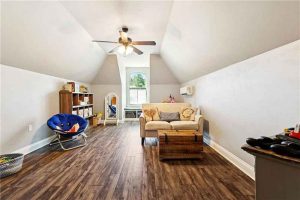What Buyers and Sellers Should Expect When It Comes to Housing Affordability
With mortgage rates still hovering near multi-decade highs and inflation showing signs of creeping upward again, housing affordability is once more at the forefront of consumer concerns. If these conditions persist, buyer demand could weaken further and home prices might finally start to soften. On the other hand, if the economy steadies and borrowing costs ease, demand could rebound quickly—pushing prices higher again. The question on everyone’s mind this fall is which direction the market will take.
Experts agree that mortgage rates remain the single biggest factor shaping affordability in the near term. Mark Worthington, a branch manager with Churchill Mortgage, explained that a sharp decline in rates could temporarily improve affordability but might also reignite demand and send prices back up. Projections suggest only minor relief: the Mortgage Bankers Association expects the average 30-year fixed mortgage rate to land near 6.7% by the end of the year, while Fannie Mae anticipates a modest dip to 6.4%. Debra Shultz, vice president of lending at CrossCountry Mortgage, noted that the Federal Reserve is unlikely to cut rates until October 2025, meaning stability rather than volatility is the most likely scenario this fall.
That stability could be a welcome development. Real estate advisor Dana Bull of Compass emphasized that steady rates allow both buyers and sellers to make decisions without fear of sudden swings. For many, predictability matters just as much as affordability.
Inventory is another piece of the puzzle. Nationally, for-sale listings have risen nearly 25% year over year, reaching the highest level since before the pandemic. More homes on the market generally lead to greater competition among sellers and potentially better deals for buyers. Yet conditions remain highly localized. In Seattle, bidding wars have already returned, while markets like Dallas still offer buyers plenty of options in the lower price ranges. Mortgage rates will influence this dynamic as well—if they fall, more homeowners with ultra-low existing rates may finally list their properties, freeing up additional supply.
As for prices, most experts expect them to hold steady or decline slightly. The median home price now sits just under $411,000, with forecasts pointing to growth of only 2 to 3% for the year, and possible drops in select regions. Shultz described current prices as “slowing but still high,” while Denver agent Brandi Wolff suggested that a significant dip in rates—below 6%—would likely spark renewed competition and drive prices higher again. If rates remain steady, however, modest price declines could continue into the fall.
For move-up buyers who are both selling and purchasing, the challenges are twofold. Increased inventory and elevated mortgage rates make it harder to attract top dollar for an existing home, even as they provide more favorable buying conditions on the other side of the transaction. Realtor.com data shows that homes are now spending an average of 58 days on the market, a week longer than last year, reflecting slower demand. Sellers who overprice risk being forced into steep reductions later. Wolff stressed the importance of setting realistic expectations from the start to maximize profits and avoid costly corrections.
Buyers looking to navigate the market more affordably this fall have several options. Negotiating concessions from sellers or arranging mortgage rate buydowns with lenders can ease monthly costs. Exploring fixer-uppers or properties that have lingered on the market for over a month may also open the door to discounts. Bull observed that sellers often become more flexible after 30 days without an offer, making it a strategic time for buyers to step in with a compelling proposal.
While forecasts remain uncertain, the consistent advice is to watch mortgage rates closely and stay informed about local trends. For those willing to be flexible and creative, there are still opportunities to find value—even in a market where affordability continues to be stretched thin.






